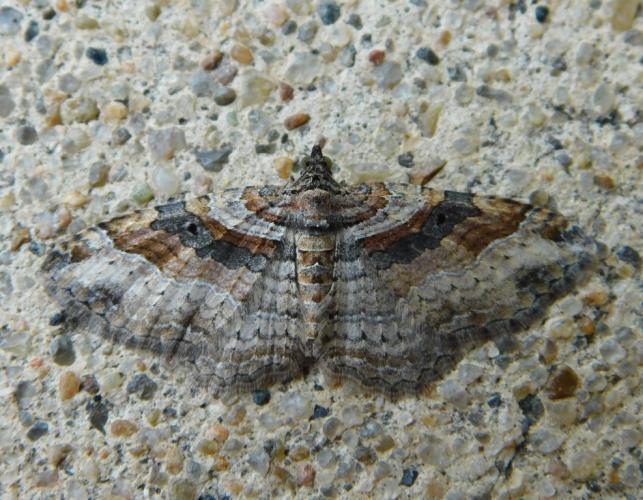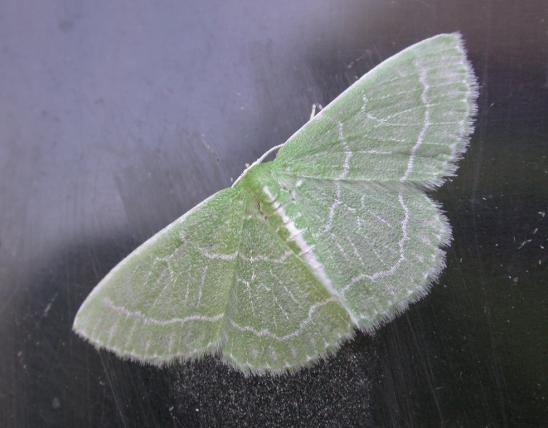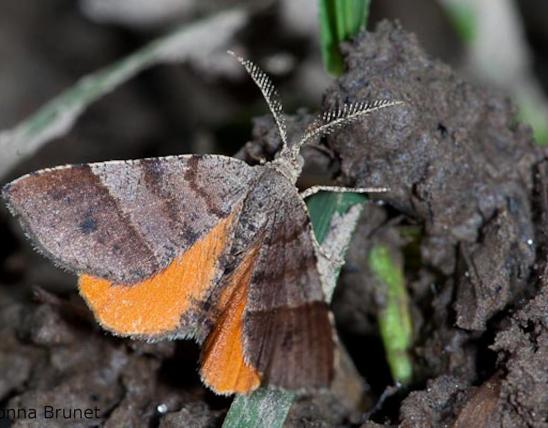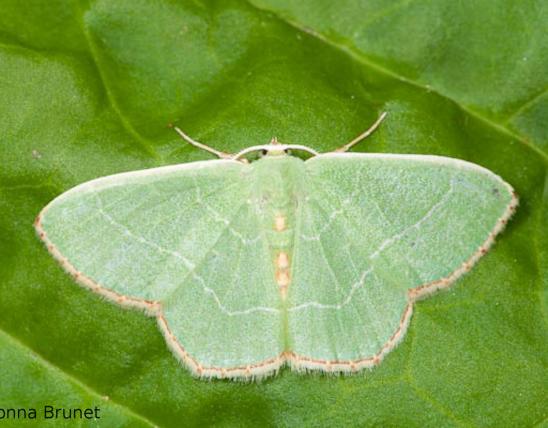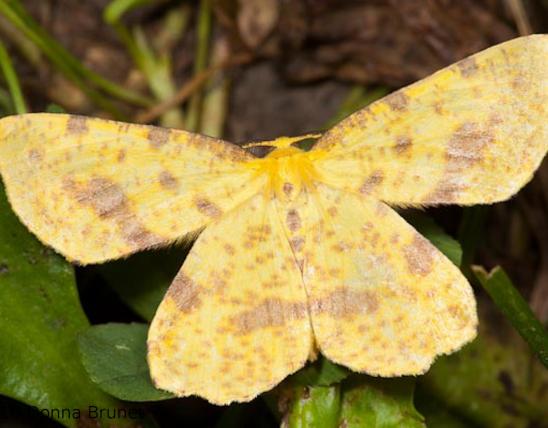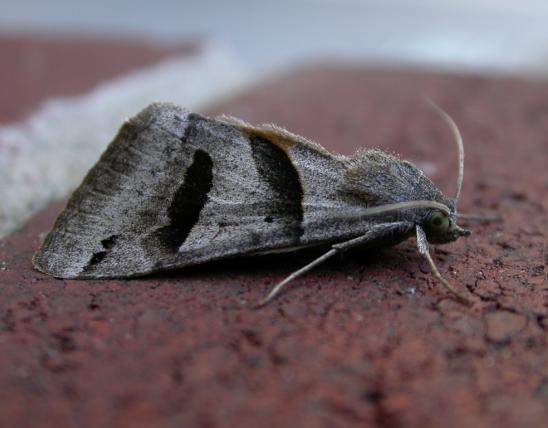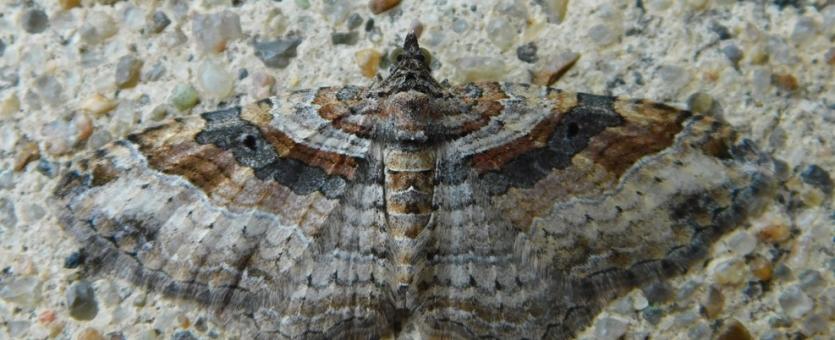
The bent-line carpet moth, and several similar geometrids, are called carpet moths for their intricate wing patterns, reminiscent of the traditional carpets of Asia and the Middle East.
The overall color of the wings may be gray to rusty, with two dark brown bands, one on either side of the wing's midline; the outer band begins at the leading edge but only runs about halfway across the forewing before abruptly stopping. There is a small black spot between the two bands, positioned where the second band ends.
Males and females can be identified by color pattern. On females, the zone between the two dark brown bands is quite dark (usually dark gray). On males, that middle area, and most of the wing, is pale gray.
Like many other moths in the geometrid family, this species has a thin body and usually holds its wide wings spread flat out to the sides. The patterns on the forewings and hindwings are often matched so that when the moth is resting, the lines appear continuous across all four wings.
The caterpillars are slender inchworms that mimic twigs. They have numerous thin, black and white stripes running lengthwise down the body.
To learn more about geometrid moths as a group, visit their family page.
Similar species: The bent-line carpet used to be placed in the same genus as the gem (Orthonama obstipata). The two are quite similar, though careful comparisons of photos separate them. A key distinction is that the gem always has an oblique (slanted), smudgy blackish line at the outer tip of the forewing.
Wingspan: about ¾ inch.
Statewide. Common throughout much of the eastern United States.
Habitat and Conservation
Like other moths, adults of this species may turn up nearly anywhere, but they are most common and abundant in places where their caterpillar food plants thrive. In this case, smartweeds and knotweeds are very common in open, wet areas, bottomlands, streamsides, ditches, roadsides, margins of crop fields, and other "weedy" areas.
Bent-line carpets are attracted to lights at night. You might find them resting on the side of a house in the morning, near where a light shone at night. From a distance, a bent-line carpet will probably look like a smudge of dirt.
Food
In the caterpillar stage, this species eats plants in genus Polygonum, comprising a wide range of familiar, often weedy species of knotweeds and smartweeds.
Although some moths are called "carpet moths" because their larvae eat textiles such as carpets, geometrid "carpet moths" were named only for their beauty. They do not damage fabrics or carpeting.
Status
Common breeding resident with at least two broods per year.
Life Cycle
Bent-line carpet moths are present from early spring until the hard frosts of autumn, and there are at least two generations annually.
Human Connections
The bent-line carpet is just one of thousands of moth species that are genuinely beautiful. The 19th-century lepidopterist Augustus Grote referred to moths as "night butterflies" and actually preferred them to butterflies. He called them "among the most beautiful phenomena of nature," pointing out that moths "afford superb instances of the blending of neutral tints, unspeakable soft browns and grays." As a moth specialist, he spent a lot of time outdoors at night!
Ecosystem Connections
Bite by bite, smartweed and knotweed foliage is transformed into the bodies of bent-line carpet caterpillars as they chew. The well-camouflaged caterpillars grow and transform into adult moths that are also well camouflaged. The camouflage serves to protect the caterpillars so that some of them can survive to adulthood. The camouflage of the adults protects them long enough to mate and reproduce.
Numerous animals eat the caterpillars, the adults, or both: birds, bats, spiders, and more. Shrews, skunks, and others hunt for the defenseless pupae in the top layers of soil. Thus the nutrients that started in the leaves of smartweeds and knotweeds are eventually converted into the bodies of birds, bats, and so on.
